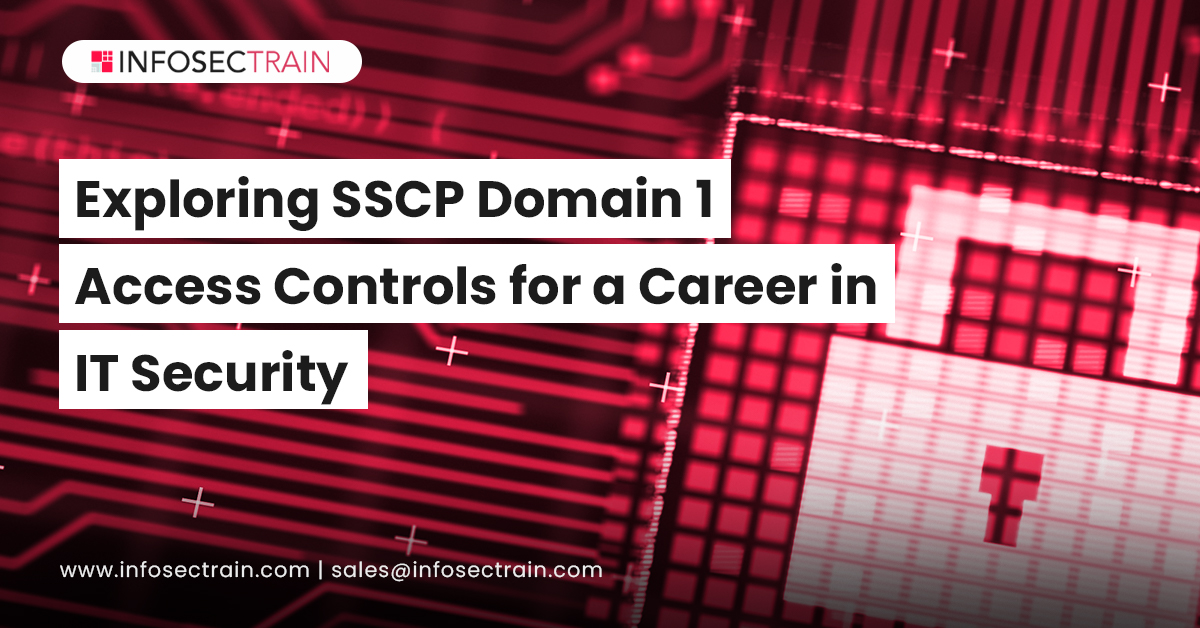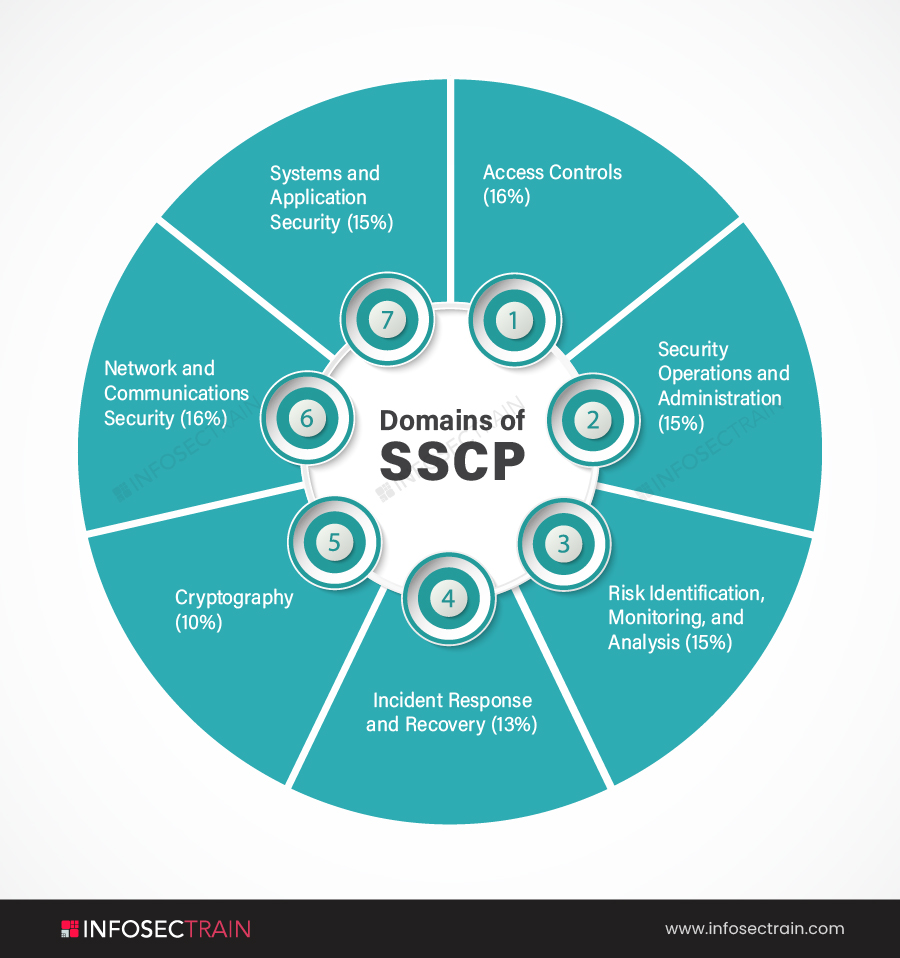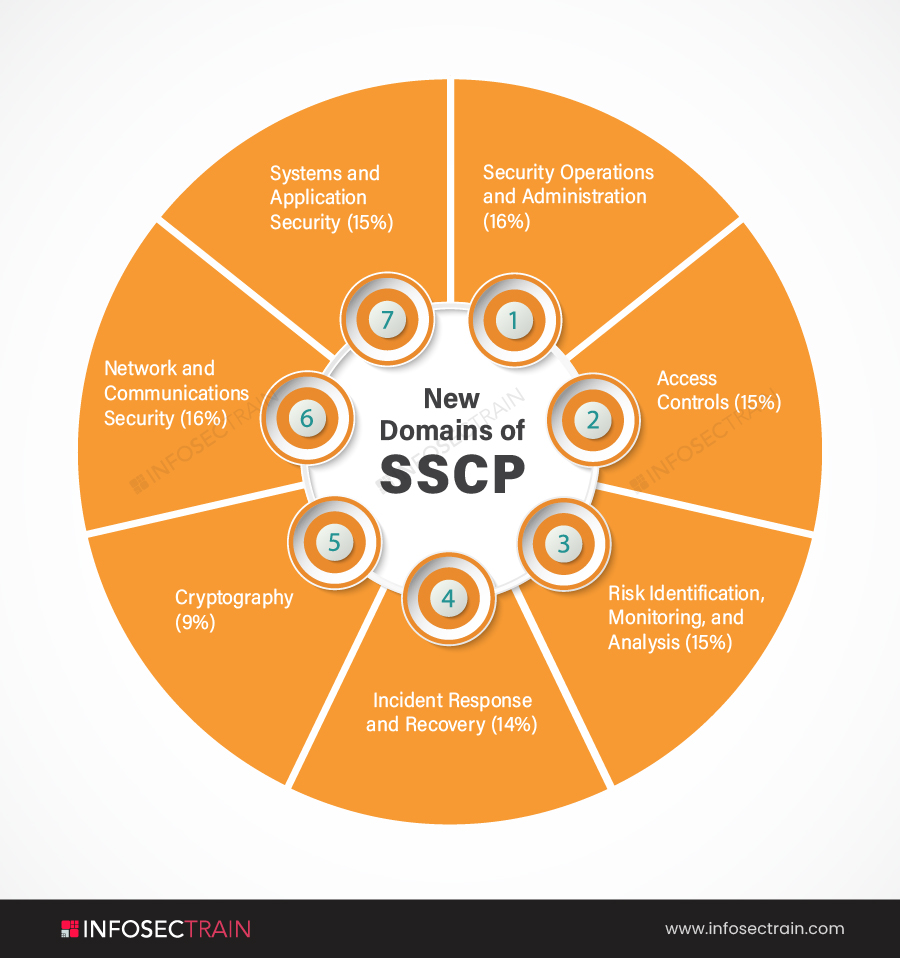Exploring SSCP Domain 1: Access Controls for a Career in IT Security
Introduction to SSCP
Skills in information security are in higher demand than they have ever been. Knowledge, experience, and abilities are no longer sufficient in today’s world. Employers want proof, such as your information security certifications, that you continuously develop your abilities to stay current with the latest threats and technology. SSCP is one of these certifications. The abbreviation SSCP stands for Systems Security Certified Practitioner. It is one of the top certifications for honing your cybersecurity skills and knowledge. If you earn the SSCP certification, you will have a globally recognized certification that verifies your knowledge, skill, and competencies in computer-related security.

The SSCP exam assesses knowledge of access controls, risk assessment and analysis, security administration, incident response, cryptography, network, communications, systems, and application security. You can become an (ISC)2 Systems Security Certified Practitioner (SSCP) if you are a hands-on IT professional with proven technical capabilities and practical knowledge of security.
Domains of SSCP

The SSCP certificate covers seven domains in the Common Body of Knowledge (CBK). The SSCP domains are:
- Domain 1: Access Controls
- Domain 2: Security Operations and Administration
- Domain 3: Risk Identification, Monitoring, and Analysis
- Domain 4: Incident Response and Recovery
- Domain 5: Cryptography
- Domain 6: Network and Communications Security
- Domain 7: Systems and Application Security
This article will cover the first domain of SSCP and what you can expect in the SSCP exam from this domain.
SSCP Domain 1: Access Controls
Domain 1 of the SSCP certification exam is Access Controls. The Access Controls comprises the weightage of 16% in the SSCP certification exam. Administrators, managers, and system analysts can use access controls to grant or prohibit access, direct their influence, and secure the contents of a computer system in a network. The realm of access control is vast. This domain covers authentication factors, organizational and user trust relationships, subject-based and object-based access control, Mandatory Access Control (MAC) and Discretionary Access Control (DAC), role-based and attribute-based access control, and the access control management lifecycle. You will learn about the concepts of implementing and enforcing access methods and policies, as well as the procedures that allow administrators to restrict access to systems and resources. You will also learn about a variety of security rules for managing access. You will also learn how to use various access control approaches in multiple settings across an organization. The first domain of the SSCP certification exam covers the following subtopics:
- Implement and maintain authentication methods
- Support internetwork trust architectures
- Participate in the identity management lifecycle
- Implement access controls
1. Implement and Maintain Authentication Methods
The implement and maintain authentication methods subsection will provide in-depth knowledge of authentication. You will learn about various authentication methods such as three-factors authentication and multi-factor authentications, single sign-on, device authentication, and others. This section also covers centralized and decentralized authentication.
2. Support Internetwork Trust Architectures
This subsection covers the trust relationships between users and organizations over networks. Understanding basic network architectures is an essential step in figuring out how to build network trust. The various forms of trust relationships include one-way, two-way, and transitive trust relationships. You will learn extranet in-depth and third-party connections.
3. Participate in the Identity Management Lifecycle
The identity management lifecycle is a collection of technology and business processes for identifying, maintaining, coordinating, and regulating access to business tools and information. This subsection will provide you with the idea of various processes involved in identity lifecycle management such as authorization, proofing, provisioning and deprovisioning, maintenance, entitlement, and more. This section will also cover Identity and Access Management (IAM) systems in detail.
4. Implement Access Controls
This subsection provides you with the knowledge on choosing and applying access controls to safeguard resources from unauthorized usage or entry. This section covers several access control strategies, such as mandatory, discretionary, non-discretionary, role-based, attribute-based, subject-based, and object-based access controls. Users can use these access control strategies in a variety of contexts within an organization.
Note: Below are the new domains of SSCP effective from November 1, 2021:

SSCP with InfosecTrain
The SSCP certification exam has never been easy to prepare for. Anyone unsure about preparing for the SSCP certification exam on their own might consider enrolling in an instructor-led training course. SSCP Certification Training course at InfosecTrain will provide you with all the necessary preparation. We are one of the leading IT security training providers in the world. Our experienced and certified instructors help you with all the assistance you need.




 1800-843-7890 (India)
1800-843-7890 (India) 
